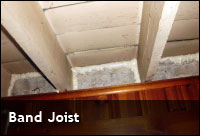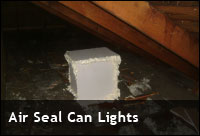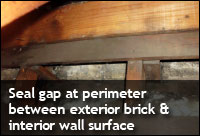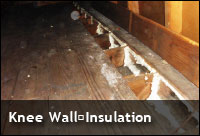AIR SEALING
Proper air sealing is designed to reduce heat loss by convection. Convection is the movement of molecules within fluids (i.e. liquids, gases) and rheids. It cannot take place in solids, since neither bulk current flows nor significant diffusion can take place in solids. Convection is one of the major modes of heat transfer. In other words, warmer air moves to cooler air. Air leakage reduction is weatherization’s most important function.
HERE ARE THE REASONS:
- Air Sealing cost has the best SIR-savings versus investment ratio
- Protects the homes thermal resistance(insulation) to save energy; air still move through insulation unless all gaps and cracks are sealed within the thermal boundary
- Reduces moisture migration into building cavities
- Increases comfort by stopping heat loss and drafts
Air sealing is accomplished by sealing gaps and holes (bypasses) in the thermal boundary. The type of materials used to seal bypasses must stop the air movement. This is why rigid products must be used to seal bypasses. Types of products used in air sealing are spray foams, 1-part and 2-part, caulks and sealants, and air barrier materials such as backer rods and rigid foam board. Fiberglass insulation does not stop air flow. Although many of our competitiors believe it does!







